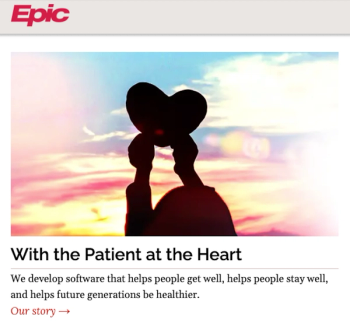
How U.S. medical practices can help us all get healthier
How physicians can deliver a great patient experience and improve patient health
No matter what role we play in supporting the U.S. healthcare ecosystem, we all have a common identity: we are all patients. As patients, we want to find healthcare providers who truly care about us, are accessible when we need them, and will guide us to high-quality care at a reasonable cost. We all hope that we will get the right care, in the right place, at the right time. However, today’s reality is a far cry from these aspirations.
In the past 20 years, the annual rate of price inflation for medical care has grown at a 60% faster rate than for other goods and services. Paradoxically, providers are often not reimbursed for services – like calling a patient or paying a care manager – that help control illness and prevent more expensive future care. Meanwhile, patients defer care today because of the immediate out-of-pocket cost. According to the Kaiser Family Foundation, one in five adults without healthcare insurance said that they went without needed care in the past year because of cost. Clearly, there is economic misalignment between provider/patient incentives and the actual cost of healthcare in the U.S.
The coronavirus pandemic has highlighted some of the inherent challenges in our system. As non-emergency patient visit volume has declined (because people do not want to leave their homes), many healthcare provider organizations have been impacted financially. At the same time, patients are missing out on preventative care. Those at highest risk of COVID-19 complications are those that need preventative care the most. While we want our economy back on the road to recovery, its long-term health depends upon the overall health of our people and our healthcare ecosystem. The current road we’re on is not sustainable in the long term as costs are going up and the population is progressively aging.
So what do we need to do? Healthcare providers need to deliver a great patient experience by reorienting their strategies to ensure patients are as healthy as possible. At the same time, healthcare organizations need to do more to prioritize getting the right patients in the door. These are “no regret” steps that will pay dividends to all healthcare organizations -- whether focused on fee-for-service (FFS), value-based care (VBC), or a mixture of both.
There are three critical elements all healthcare organizations need to prioritize as part of their strategies moving forward, starting today:
- Deliver a better patient experience that is focused on outcomes: Practices need to make it easier for patients to be seen and when they are seen, their experience should be seamless. This starts with providers being prepared for patient visits, rather than getting up to speed in the exam room. They need to make sure patients show up, are seen on time, and have a high-quality, consumer-grade experience. They need to shift more patient care and engagement online and to mobile applications. Why? First, patients have new alternatives today to traditional care and have evolved into on-demand, digital consumers. They will leave providers who do not evolve. Second, the more that the entire care team can prepare for, and be aware of, a patient’s full set of conditions and needs, the higher the chance of closing care gaps beyond the reason for the visit and avoiding poor outcomes. Third, the benefits of practices leveraging digital channels allows providers the ability to plan ahead and manage time effectively - directly translating to better patient experiences.
Medical practices need to deliver higher-quality experiences to patients and drive better health outcomes. According to the Centers for Medicare and Medicaid Services, the median performance data for Accountable Care Organizations (ACOs) shows that just 50% of patients receive cancer screening tests, 50% of patients with diabetes have well-controlled HbA1C levels, and 50% of patients with hypertension have controlled blood pressure — we can do better to improve statistics like these. - Drive patient outreach that is focused on specific care needs and getting the right patients “in the door”: It is critical to get the right patients in the door and for providers to think more proactively about their patient populations, especially those who need the greatest amount of care. If there is one positive outcome from COVID-19 for healthcare practices, it is the increased availability of and willingness to use telehealth and other modes of virtual care to increase care opportunities. Today, “in the door” means more than just an in-office visit, including new options such as telehealth visits, phone calls, or portal messages from a member of the care team. According to Software Advice, telehealth visits have been shown to increase patient satisfaction for 67% of patients, which highlights how critical it is for providers to explore all avenues of engaging with patients.
At the same time, it is important that practices do more to reach out to the right patients at the right time, such as increasing their attention to wellness visits that address patients’ long-term care needs. It is critical that providers not only treat the problem at hand, but also proactively identify other issues outside the reason for the immediate visit and proactively reach out to patients to ensure they are receiving the care needed. - Identify follow-up care, and ensure patients get it, at a reasonable cost: According to a survey from Westhealth Institute and NORC at the University of Chicago, 40% of Americans admit to skipping a recommended medical test or treatment due to affordability. Practices also fall behind in implementing non-traditional modes of engagement, like telehealth and portal messaging. Follow-up care focuses on engaging patients in a number of different ways including referrals,practice portals, and price transparency for medication adherence. These tactics are beneficial to drive schedule utilization and patient engagement – advantageous for both fee-for-service and value-based care models – and help promote positive patient health outcomes.
As we re-emerge – we hope – from COVID-19, we need to help medical practices get back to health quickly, while driving more accessible, affordable, and higher-quality care. This will require a more patient-centric approach to healthcare. We need to improve the overall patient experience, utilize more modern and digital tools, and drive follow-up that will improve everyone’s collective health. Shifting to a more patient-centric, outcome-oriented approach will no longer be an option but truly a necessity in order for both practices and patients to thrive and succeed in a post-COVID world.
Bret Connor is SVP and Chief Customer Officer at athenahealth, Inc.
Newsletter
Stay informed and empowered with Medical Economics enewsletter, delivering expert insights, financial strategies, practice management tips and technology trends — tailored for today’s physicians.















